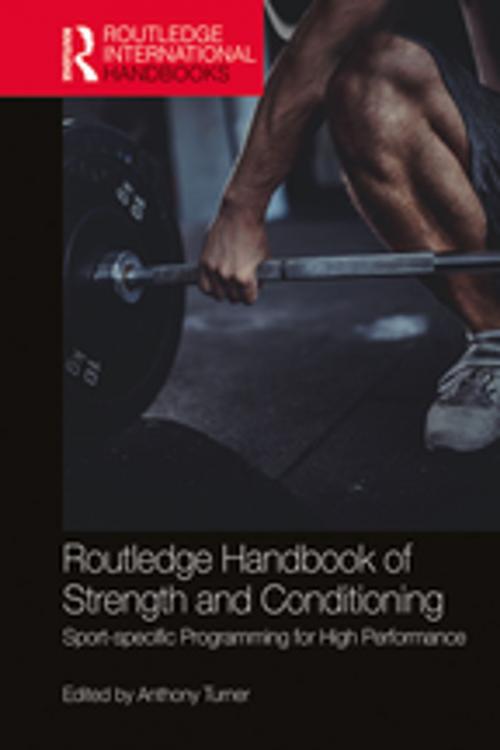Routledge Handbook of Strength and Conditioning
Sport-specific Programming for High Performance
Nonfiction, Sports, Bodybuilding & Weight Training| Author: | ISBN: | 9781134879571 | |
| Publisher: | Taylor and Francis | Publication: | February 1, 2018 |
| Imprint: | Routledge | Language: | English |
| Author: | |
| ISBN: | 9781134879571 |
| Publisher: | Taylor and Francis |
| Publication: | February 1, 2018 |
| Imprint: | Routledge |
| Language: | English |
Drawing on the latest scientific research, this handbook introduces the essentials of sport-specific strength and conditioning programme design for over 30 different sports. Enhanced by extensive illustrations and contributions from more than 70 world-leading experts, its chapters present evidence-based best practice for sports including football, rugby, tennis, hockey, basketball, rowing, boxing, golf, swimming, cycling and weightlifting, as well as a variety of wheelchair sports.
Every chapter introduces the fundamental requirements of a particular sport – such as the physiological and biomechanical demands on the athlete – and describes a sport-specific fitness testing battery and exercise programme. Additional chapters cover the adaptation of programme design for special populations, including female athletes, young athletes and athletes with a disability. Drawing on the experiences of Olympic and Paralympic coaches and trainers, it offers original insights and practical advice from practitioners working at the highest level.
Innovative, comprehensive and truly international in scope, the Routledge Handbook of Strength and Conditioning is vital reading for all strength and conditioning students and an invaluable reference for strength and conditioning coaches and trainers.
Drawing on the latest scientific research, this handbook introduces the essentials of sport-specific strength and conditioning programme design for over 30 different sports. Enhanced by extensive illustrations and contributions from more than 70 world-leading experts, its chapters present evidence-based best practice for sports including football, rugby, tennis, hockey, basketball, rowing, boxing, golf, swimming, cycling and weightlifting, as well as a variety of wheelchair sports.
Every chapter introduces the fundamental requirements of a particular sport – such as the physiological and biomechanical demands on the athlete – and describes a sport-specific fitness testing battery and exercise programme. Additional chapters cover the adaptation of programme design for special populations, including female athletes, young athletes and athletes with a disability. Drawing on the experiences of Olympic and Paralympic coaches and trainers, it offers original insights and practical advice from practitioners working at the highest level.
Innovative, comprehensive and truly international in scope, the Routledge Handbook of Strength and Conditioning is vital reading for all strength and conditioning students and an invaluable reference for strength and conditioning coaches and trainers.















